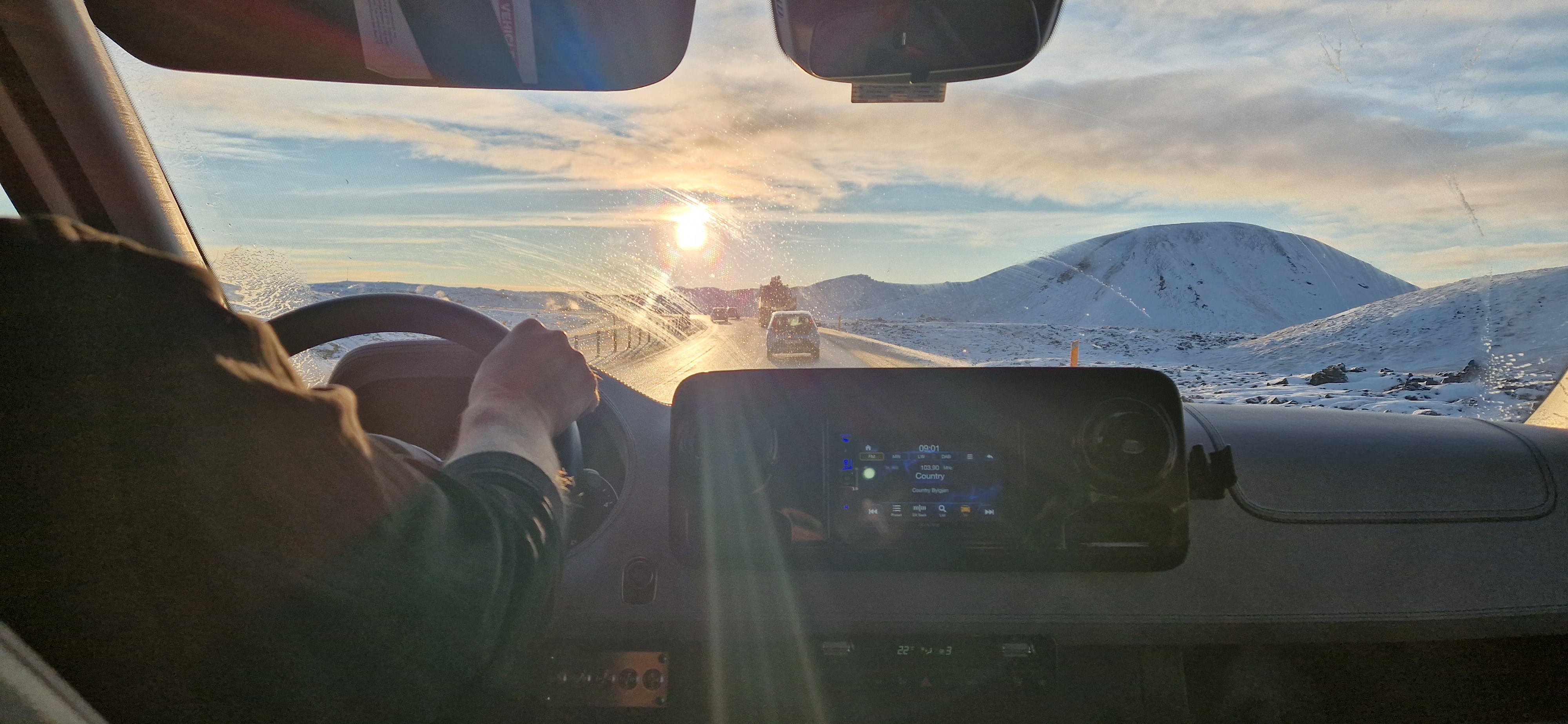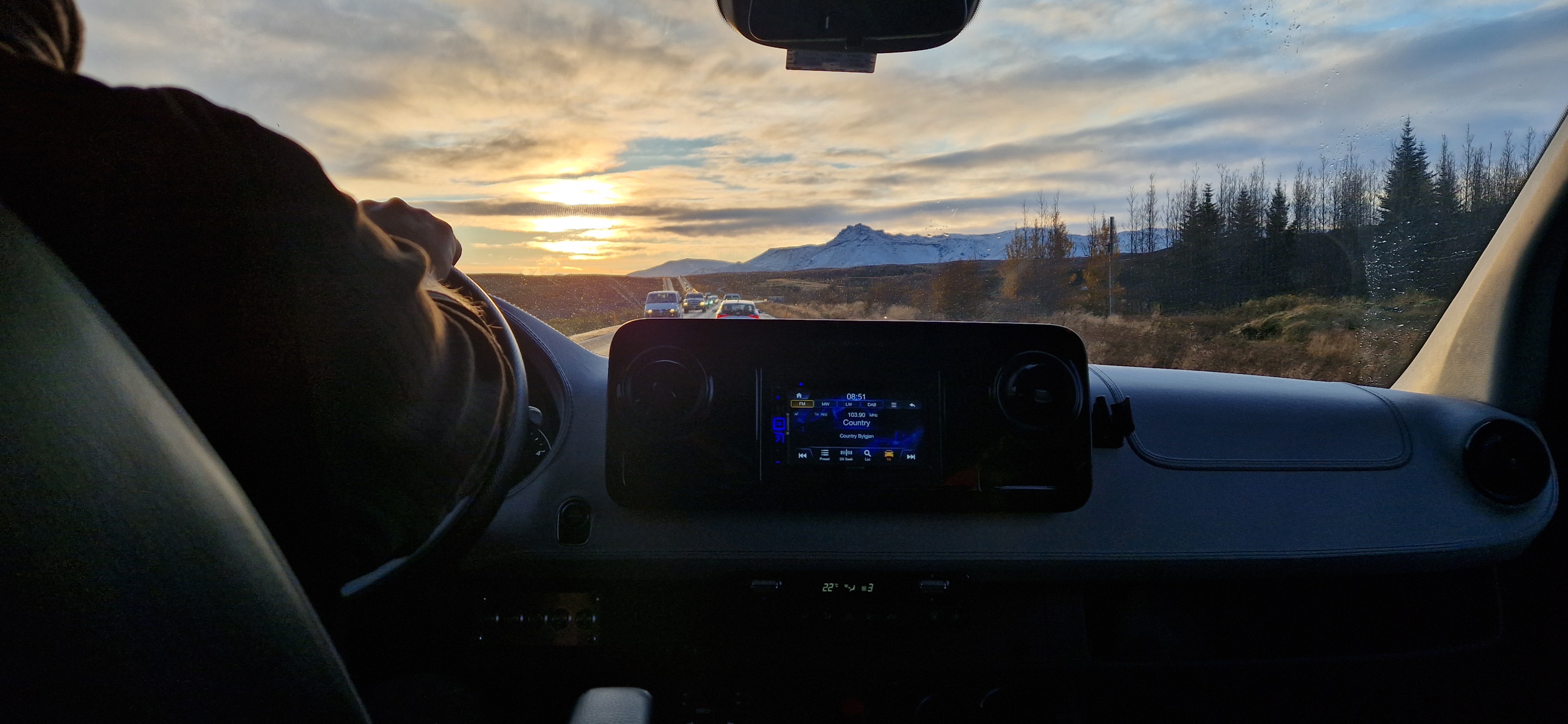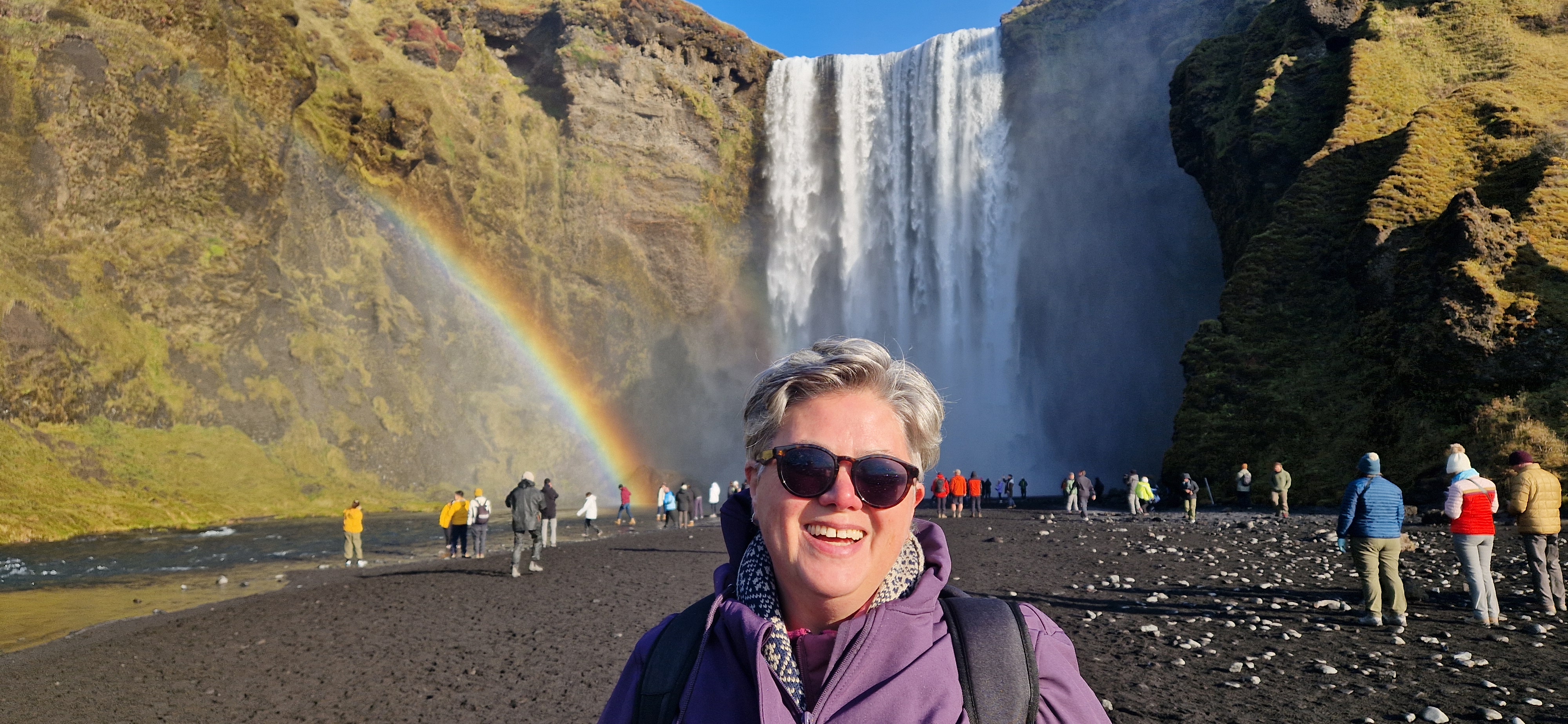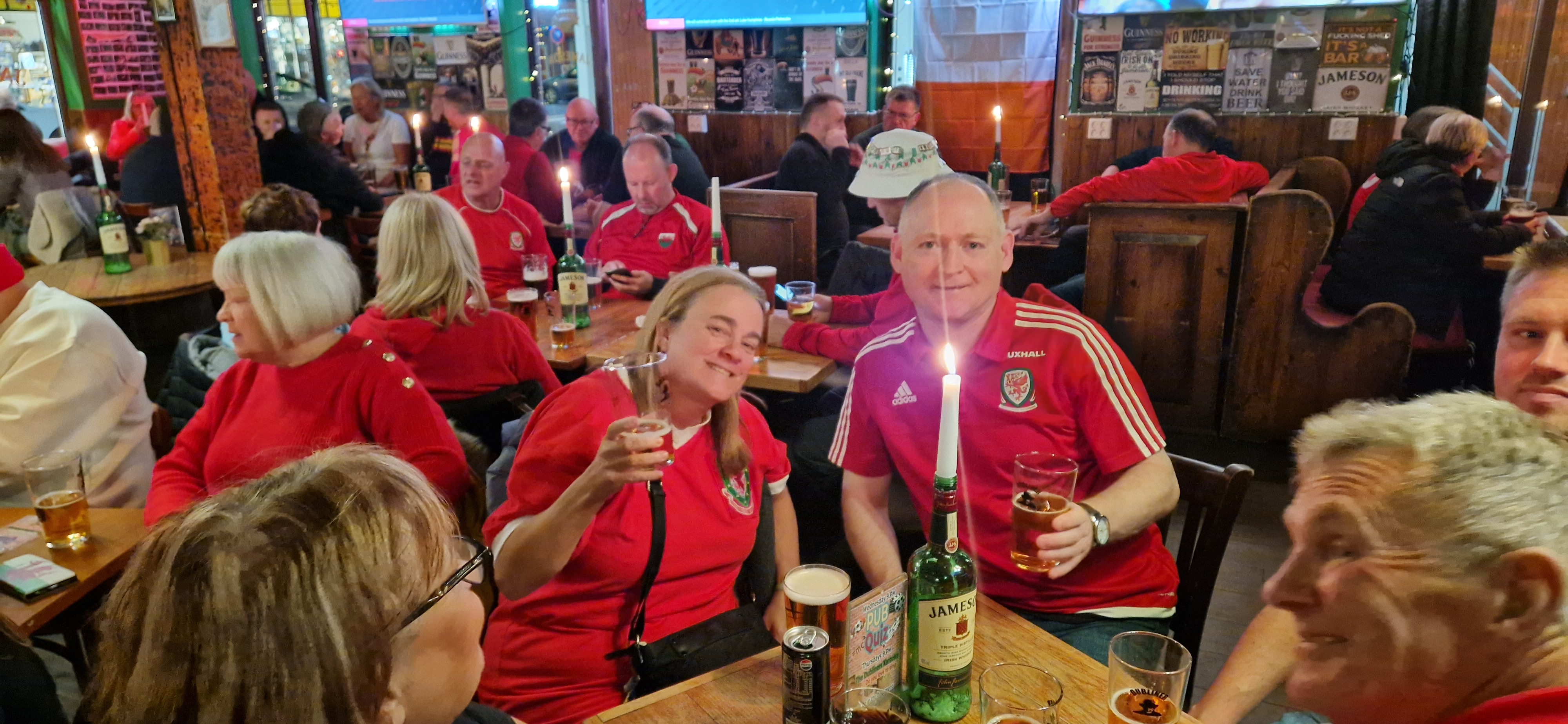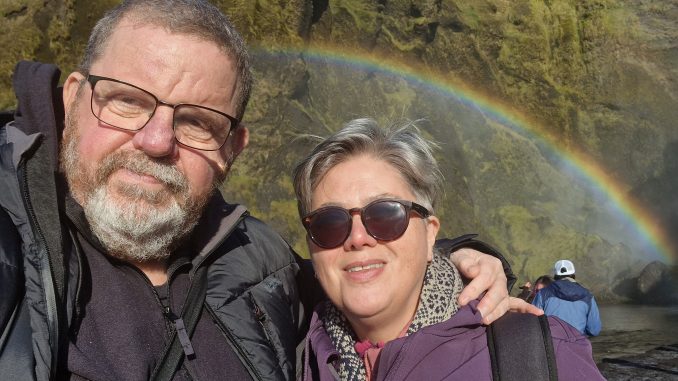
In today’s exciting blog, we have tales of volcanoes, waterfalls, trolls and rainbows.
Yes, we ventured beyond the city limits again today. In daylight this time. We went on the ‘classic’ south coast tour.
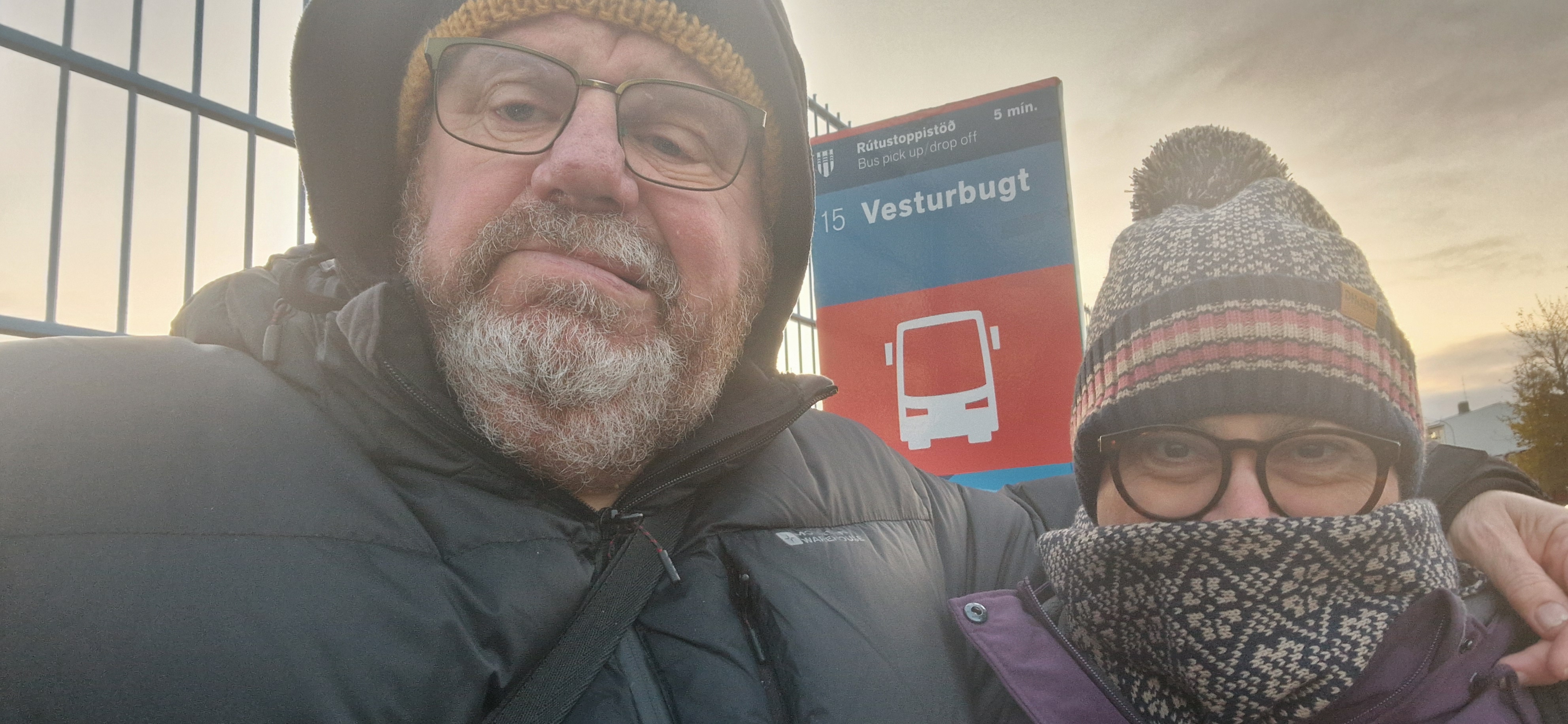
Siggy Stardustson is our guide today. First fun fact for you, they don’t do surnames the way we traditionally think of them in the UK. Everyone’s name ends in either son or dóttur (daughter). Boys are named after their father, so Aron Gunnarsson, is Aron the son of Gunnar. Luckily, unlike his father, he played for Cardiff City, rather that Arsenal. If he has a sister from the same father, her name would be Ethel Gunnardóttur. I hasten to add, I’ve made up the Ethel bit. I’ve also made up the Stardustsson bit, I can’t remember what Siggy’s surname is. Piers Morgan, translates to Piers, son of Bitch.
We are up early and away on our magical journey in Siggy’s Mercedes Sprinter minibus.
We head out of the big city into the sparsely populated ‘rest of Iceland’. We get Siggy’s version of the history of Iceland, which is broadly comparable to Andy’s version on Monday, although Siggy does say that sometimes foreigners are better informed because they have looked facts up, whilst locals just remember stuff. It’s not that simple though, locals obviously remember stuff that some foreigners don’t even know about to read up on.
If you don’t know who Andy is, read part two of this blog. I haven’t got time to be repeating myself. There will be a test at the end of the trip.
One tale that ties in with Andy is about a Viking dude back in the year 847AD that brought two poles (the wooden type, not the plumber type) from home on his ship and chucked them in the sea. They then settled on the shore and he sent some blokes to look for the poles. He had decided where they landed would be where they would make their permanent settlement. Turns out the poles washed up in Reykjavik, which was handy, because that’s where there’s a statue of the Viking dude. (Note to self, look up his name before publishing this blog: EDIT: It’s Ingolfur Arnason).
For most of its history, Iceland has had a very small population but it has grown quite rapidly in recent years.
Much of the recent population growth has been down to being part of the Shengen agreement that allows free travel within Europe. There is now a very large population of Poles living here. (The plumber type, not the wooden type.)
A lot of growth in Reykjavik has also been the result of improved roads and the advances in technology. Most farm work is now done by machines and country folk are now able to move to the city for work.
Early in the journey the Siggy Star Bus climbs up into snow-capped mountains. It looks a bit like ‘North of the Wall’ in Game of Thrones, the popular TV show. Mainly because this is where it was filmed.
We pass a geothermal power station. They have drilled boreholes 2,000m into the ground. The holes tap into underground pockets of compressed steam, the steam zipps up the pipes, turns some turbines and makes electricity. They then cool the steam to around 60 degrees, so it’s just hot water, and pipe it into Reykjavik where it eventually comes our of peeps hot water taps. Cool or what? (Well, 60 degrees is not really cool, but you know what I mean.)
On the subject of geothermal energy we pass several sleeping volcanoes. Most of the mountains you see were volcanoes at some point. Some are more dormant than others.
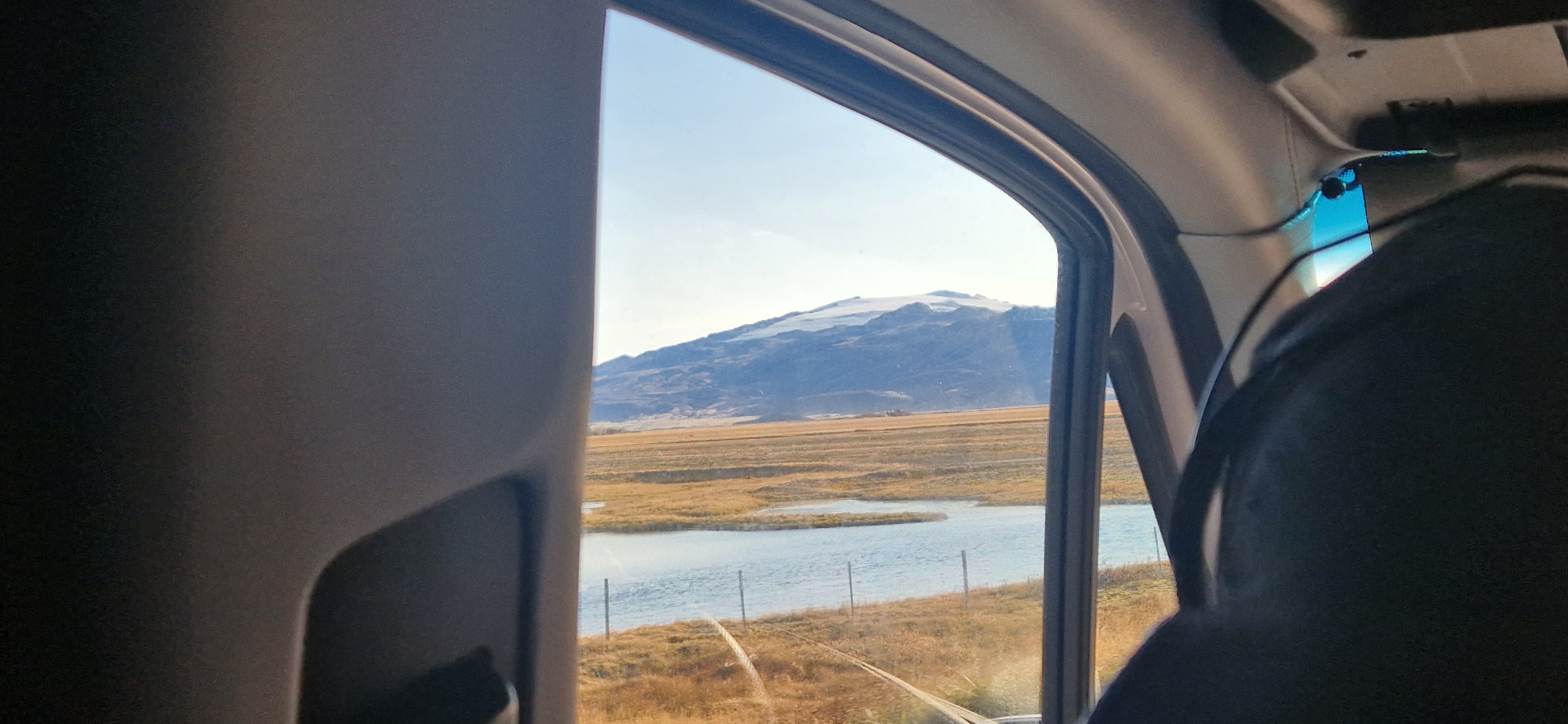
We see a volcano that is covered with a glacier. Well, what happens when one of those erupts? Glaciers are obviously made of ice, which is frozen water. When ice meets super heated lava from the centre of the earth, it warms up a bit. Actually, it warms up very quickly. When you have thousands of tons of ice turning into water in a very short space of time, you get a full on tsunami, but instead of coming in from the sea, it comes down from the mountains and floods everything in its path. So one of the first warnings of a volcano eruption under a glacier is a flood.
There was a time when glaciers would replenish themselves. Glaciers would melt a bit in the summer, more snow would fall in the winter, turn to ice, and the glacier stayed the same. That was in the old days. Not now. We went to visit a glacier that fifty years ago filled a whole valley, hundreds of meters deep. It has now receeded, leaving a baron empty valley behind. Thirty years ago they built a visitor centre and car park, that people would use as a base to walk the glacier. It was right next to the glacier. Now you have to walk half a mile to get to it.
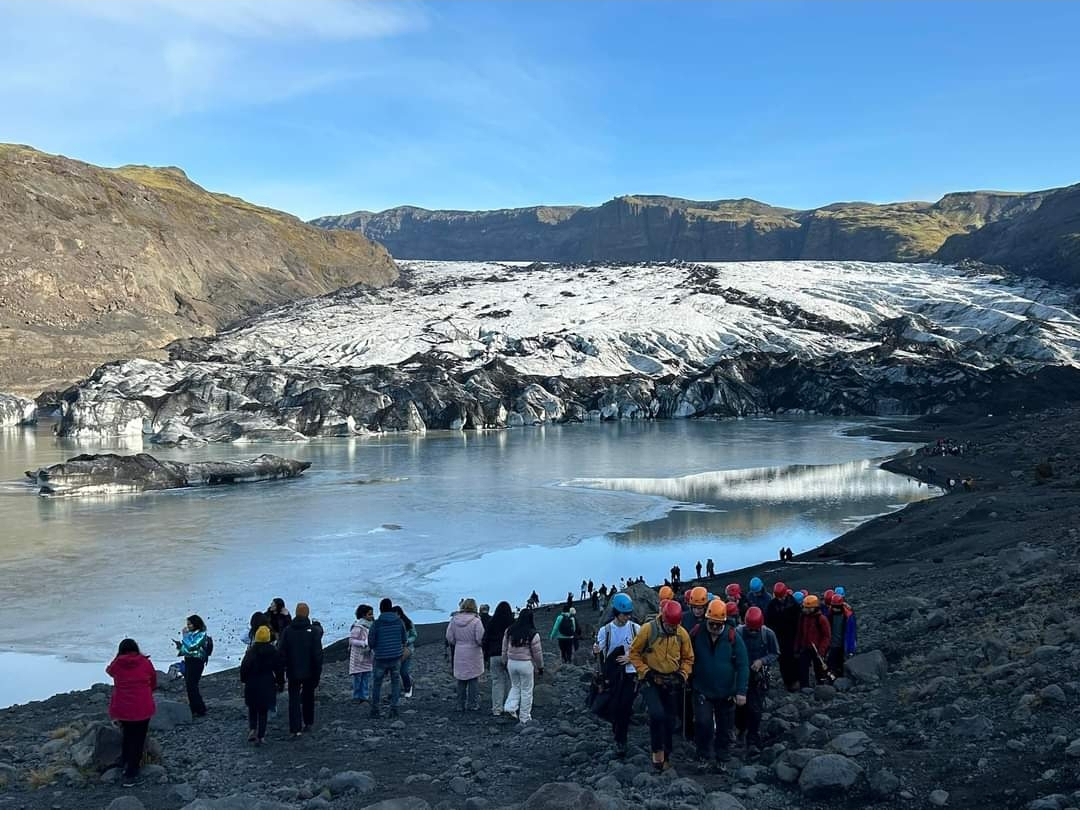
There’s a black dust covering the white glacier. I had assumed that was ash from a recent volcanic eruption. It’s not. It’s from an eruption over a hundred years ago. The snow over the years had covered it, but it is now exposed again. Which basically means over a hundred years of ice has melted.
Looking online at various trips, I note that you can book a trip to drive on the glacier in a giant, off-road, monster bus. No doubt a huge gas guzzler. Part of the cause of the global warming that has resulted in the glacier shrinking. Irony is alive and well.
As well as the impact on glaciers, volcanoes have an impact on the land around them, the sea around them and the air.
Off in the distance we see new islands that have formed in the last century, that exist purely because of volcanoes. It is likely that in the next few hundred years more volcanoes will result in t⁹hose islands joining up to form a new peninsula and become part of the rest of Iceland.
We drive past Eyjafjallajökull, the volcano that erupted in 2010, grounding all air traffic in Europe for two weeks, such was the column of volcanic ash it pumped out into the sky.
That ash also landed on the farms nearby potentially devastating the land. Ash can contain things like sulphuric acid that would make growing anything impossible, but the winds blew all the nasty stuff away leaving nice stuff, which actually fertilised the land making it the richest farm land in the country.
Look. I’m not a scientist, I’m just telling you what Siggy said. Take it up with him if you want to know what the ‘nasty stuff’ was.
On today’s trip we visited three waterfally things. One of them was as tall as Niagra Falls, but not as wide. The waterfall itself was impressive but we were mesmerised by the double rainbow that that had formed in the spray. Ain’t science brilliant?
The rainbow was handy, because I had a pie I needed to weigh*.
(*Megan insists that I explain this. It’s a Wizard of Oz joke. “Somewhere, over the rainbow, weigh a pie’.)
Anyway. At one of the waterfalls there is a path where you can walk behind it. Siggy said you won’t get wet walking behind it. Siggy lied. Everyone we saw coming from underneath it was soaked. The deciding factor for us though, was the path. It’s next to a waterfall. It’s -2 centigrade. It’s covered in ice.
Only a headcase would risk it. But, as it turns out, there’s a lot of headcases about. Our tip, if you visit this site, is take a waterproof layer you can strip off, wear crampons on your shoes and make sure your travel insurance and will are up-to-date. Or alternatively, just don’t go under the waterfall.
The trip also included a trip to The Black Beach of Reynisfajra . Centuries ago, the mighty Katla volcano nearby erupted and the glowing, molten hot lava collided with the ice-cold Atlantic Ocean, creating black rock.
Over the centuries, that black rock eroded away into dust-sized particles, creating the black sand you see on the beach today. The beach stretches for miles and miles.
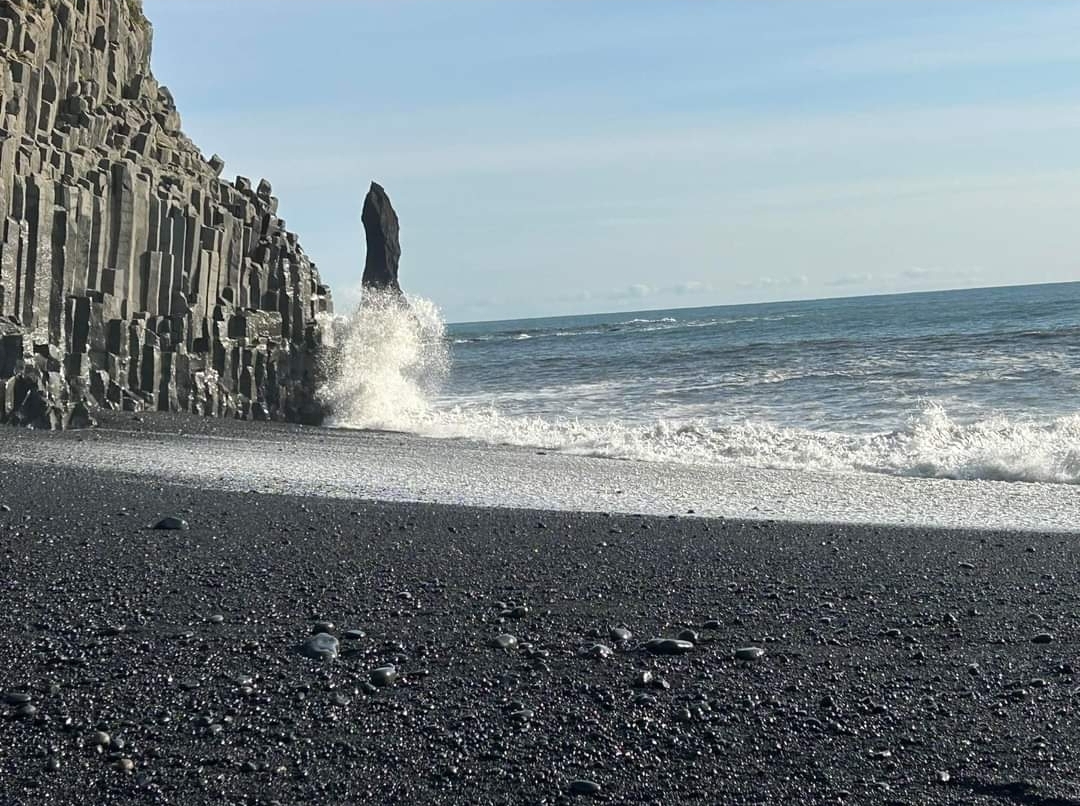
It’s also famous, according to Siggy, for the fossilised Trolls. For many years, before the Vikings landed, Trolls used to roam freely on the island. Much like Internet Trolls, they thrived in the dark and didn’t like daylight. In fact, a bit like vampires, they turn to stone if caught in daylight. In the winter it was fine, because it’s dark for twenty-three hours a day, but in the summer it’s only dark for one hour a day.
Then the Vikings came along and disrupted the daily life of the Trolls, so the Trolls went out to shoo them away, but came off second best when they turned to stone. You can see many of these petrified Trolls along to coast of the Black Beach. According to Siggy, but he’s just remembering stuff.
If you actually research it, other facts are available. An alternative version is that they are columns of basalt. I think I prefer Siggy’s version.
Along one stretch of the coast there’s a cliff with a weird formation similar to that of Giant’s Causeway, which by coincidence is also made of basalt and is the result of a historic volcanic explosion.
Hexagonal columns are tightly packed together to form the cliff and present stepping stones for fans of Instagram to climb up and take selfies, spoiling it for those that want to take photographs of the cliffs without social media influencers on them.
The whole beach cheered when half a dozen influencers were washed off the cliff by a phenomenon known as Sneaky Waves. There’s even signs warning you about them.
The sea lulls you into a false sense of security, you get close to the waters edge, thinking you’re safe till the tide comes in. Then every five minutes or so a mini tsunami wave comes in and washes all the way up the beach, taking unsuspecting Instagramers with it.
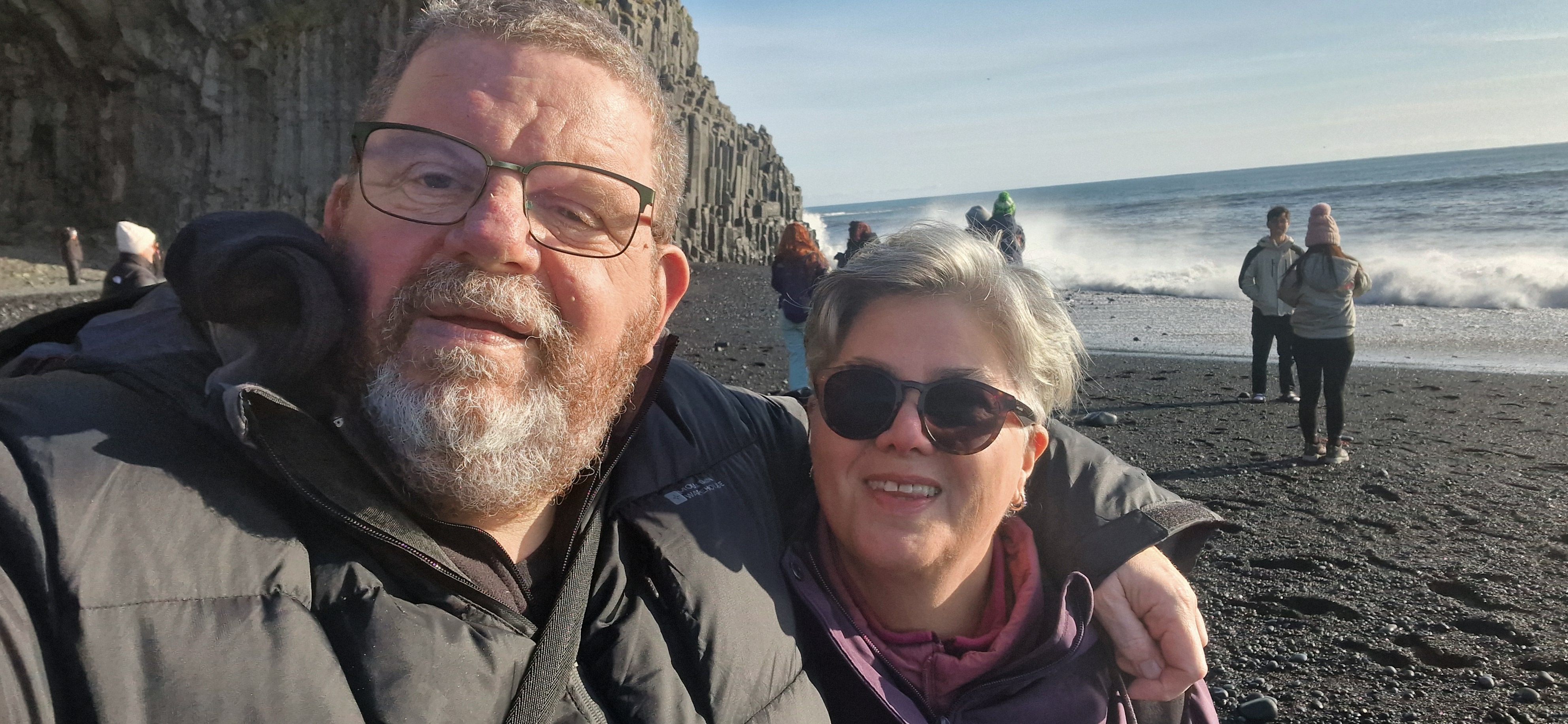
Eventually, we have to call it a day. It’s getting dark and the Trolls will be out soon. We head back to Reykjavik, drop off our daytrip gear and head to The Dubliner to catch the end of Happy Hour. And, just like the Trolls coming out to play in the dark, the Red Wall has started to arrive.
It’s beginning to feel a lot like Wales Away.
In tomorrow’s blog – Whale Watching.
* trip booked through https://yourdaytours.is/iceland/tours/south-coast-small-group/
